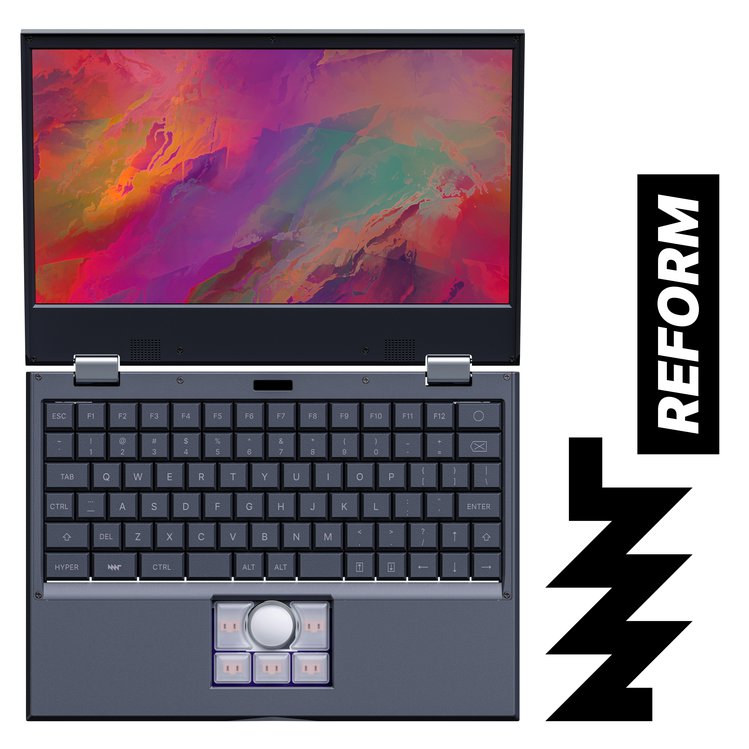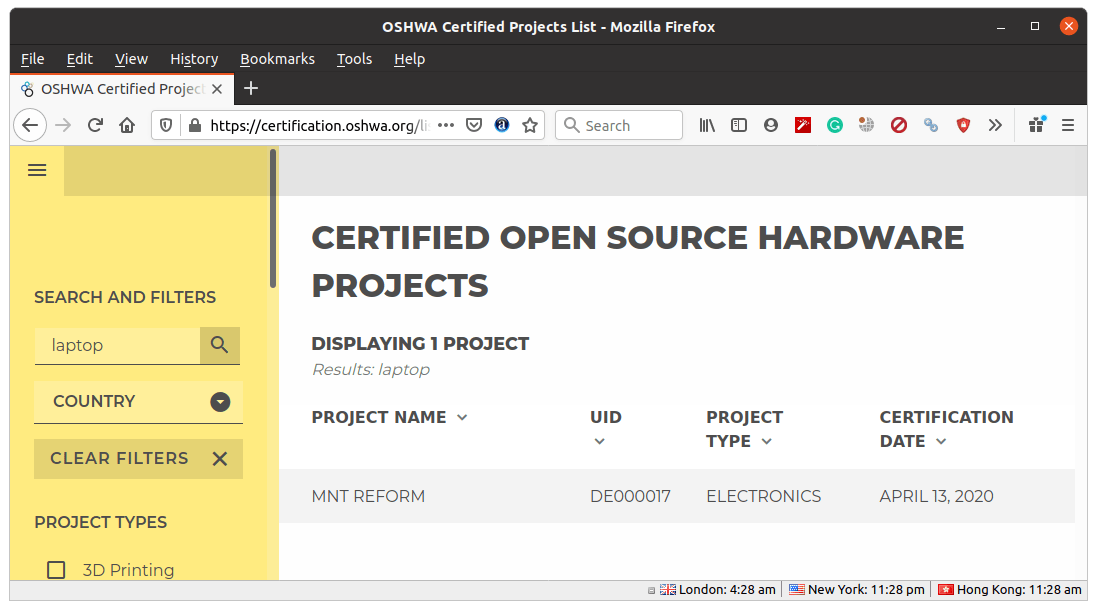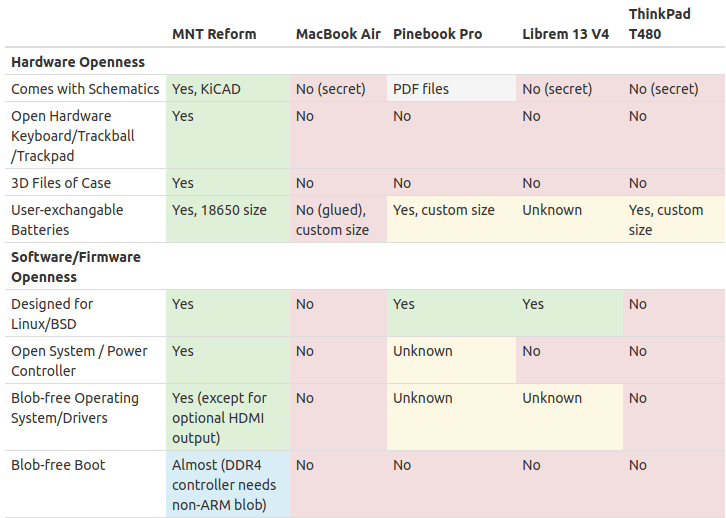MNT Reform DIY Arm Linux laptop has been in the works at least since 2017. The open source hardware laptop is also fully modular with Boundary Devices Nitrogen8M SoM featuring NXP i.MX 8M quad-core Cortex-A53 processor and 4GB RAM, M.2 NVMe SSD storage, and standard, replaceable 18650 batteries.
The good news is the laptop is now almost ready for prime-time and has been launched on Crowd Supply with price starting at $999 in DIY kit form without storage, and $1,300 for a complete, assembled system with 256GB NVMe storage. If you don’t have that amount of money to spend, but would like to support the project, a $40 MNT Reform T-shirt is also offered. Alternatively, the motherboard only goes for $550.

- SoM – Boundary Devices Nitrogen8M
- SoC – NXP i.MX 8MQuad quad-core Cortex-A53 processor @ 1.5 GHz, 1x Arm Cortex-M4F real-time core Vivante GC7000Lite 3D GPU
- System Memory – 4GB LPDDR4
- Networking – Atheros Ethernet MAC chip (AR8035)
- 200 pin SO-DIMM edge connector exposing USB 3.0, PCIe, MIPI DSI, etc…
- Dimensions – 67.6mm x 48.4mm
- Motherboard
- Storage
- SD card slot, M.2 SSD support
- MNT Reform DIY Kit – No storage device included
- MNT Reform – 256GB NVMe SSD
- MNT Reform Max – 1TB NVMe SSD
- Video Output
- Texas Instruments SN65DSI86 MIPI DSI to eDP controller for the display
- HDMI output up to 4K
- Audio – Wolfson/Cirrus WM8731 audio DAC; headphone/microphone jack; amplifier driving two 1W speakers
- Networking – Gigabit Ethernet (RJ45), optional mini PCIe ath9k Wi-Fi card (included in MNT Reform Max)
- USB – Texas Instruments TUSB8041 USB 3.0 hub chip for the trackpad, keyboard, and three USB 3.0 Type-A ports
- Expansion Slots
- M.2 M-key slot for NVMe SSD
- mPCIe slot for WiFi card, an embedded graphics card, FPGA board, etc..
- System Controller – NXP LPC11U24 Cortex-M0 MCU to control an analog monitor chip for the 8 battery cells and the charger.
- Power Supply – 24V/2A via barrel jack
- Storage
- Displays
- 12.5″ IPS eDP (embedded DisplayPort) panel from Innolux, with 24-bit color and 1920×1080 resolution.
- 128×32 pixel OLED display on top of the keyboard
- Camera – No camera included, but internal MIPI CSI connector present
- User Input
- Keyboard – ANSI layout with 80 mechanical low-profile Kailh Choc switches
- Trackball – 5 buttons and a small surface tracking sensor
- Optional trackpad as an alternative to the trackball
- Batteries
- Replaceable 8x 18650 LiFePO4 battery cells with a nominal voltage of 3.2V (meaning an operating voltage of 28.8V).
- Capacity -12,000 mAh good for about 5 hours of use
- Case parts
- Screen Back for housing the display and upper half of hinges.
- Screen Front for housing speakers and providing display bezel.
- Main Box for all boards, keyboard, battery board…
- Main Box Top to provide a bezel for the keyboard and the system controller OLED.
- Main Box Bottom either milled from clear acrylic or aluminum.
- Dimensions – 29 x 20.5 x 4 cm
- Weight – ~1.9 kg
- Certification & Licenses – OSHWA (Open Source Hardware Association) #DE000017 with CERN OHL-2.0-S (hardware), GPL 3.0 (software, firmware) and CC-BY-SA 4.0 (documentation, artwork) licenses
MNT Reform is the one and only OSHWA certified laptop that I could find (on May 9, 2020), but not the first “open source hardware” laptop running Linux, with for example PineBook Pro which is virtually unbeatable in terms of price ($200) and performance (Rockchip RK3399). However, MNT Reform has a fairly different design philosophy as openness, user serviceability, and modularity were the main goals, even guiding some hardware design decisions that increased the price of the device.
All hardware design files have been released, and the software (Debian 11 installer with Linux 5.x mainline preloaded on MicroSD card) can operate with open-source only components, except for the RAM. Some specific features that you may optionally opt to use do require closed-source binary blobs including HDMI output (HDCP blob). You’ll find hardware (KiCad), 3D design, and software on the MNT Reform website.
The crowdfunding campaign launched less than 24 hours ago, and it’s not going too bad with $60,000 raised out of $115,000 funding target. The prices listed in the introduction include free worldwide shipping, and backers should expect their rewards to ship in December 2020.

Jean-Luc started CNX Software in 2010 as a part-time endeavor, before quitting his job as a software engineering manager, and starting to write daily news, and reviews full time later in 2011.
Support CNX Software! Donate via cryptocurrencies, become a Patron on Patreon, or purchase goods on Amazon or Aliexpress. We also use affiliate links in articles to earn commissions if you make a purchase after clicking on those links.






